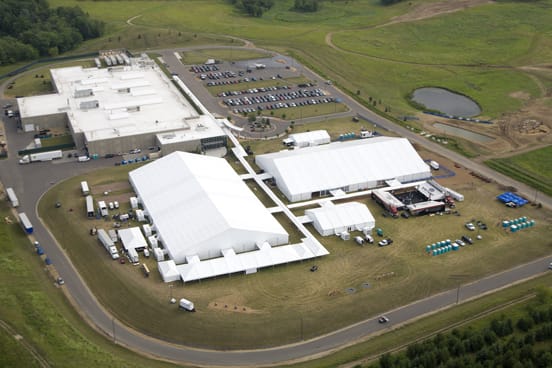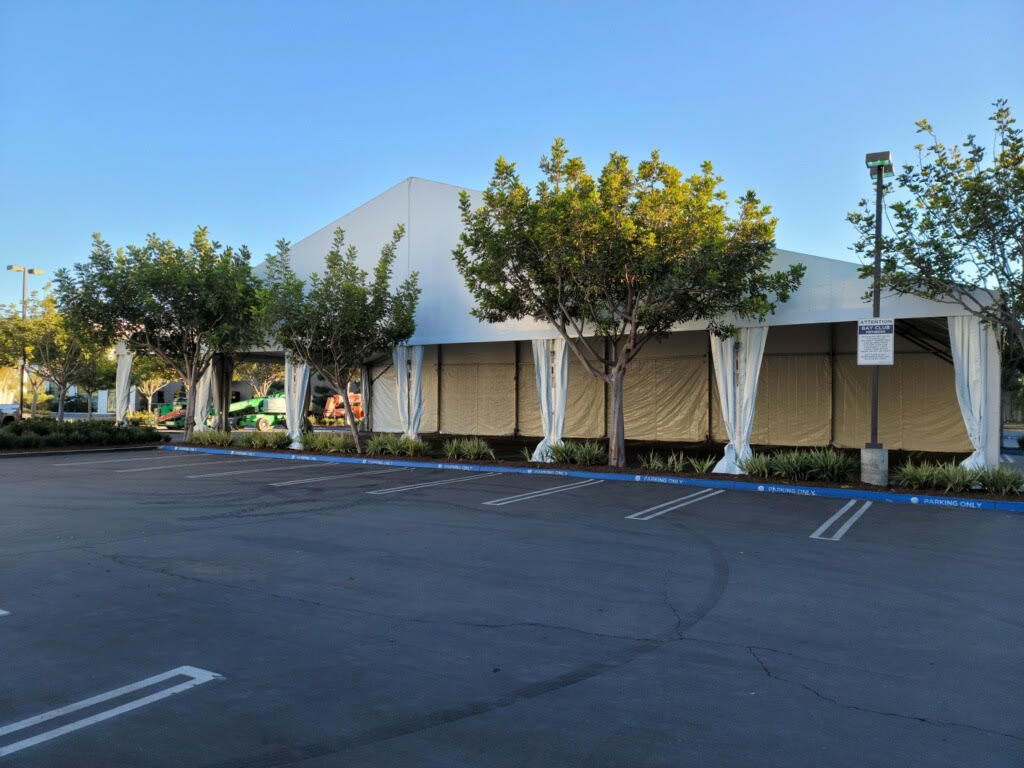
Introduction
Clearspan tents are specifically engineered for both versatility and durability, offering an optimal solution for a wide array of events and projects. Whether hosting elegant weddings, accommodating expansive corporate functions, facilitating critical construction projects, or providing essential cover for disaster relief efforts, clear span tents stand out as the premier choice. These structures are celebrated for their ability to provide a reliable and stylish setting without the constraints of internal supports, ensuring a spacious and unobstructed environment. With their robust construction and adaptable design, our clearspan tents not only meet but exceed the diverse needs and aesthetic preferences of any event planner or project manager, guaranteeing a functional yet elegant backdrop tailored to any occasion.
Why Choose Clearspan Tents?
Unobstructed Space: With no interior poles or supports, clearspan tents offer a vast, open area that enhances visibility and usability. This makes them perfect for events requiring unblocked views and flexible space for equipment and guest seating.
Robust Construction: Manufactured with sturdy aluminum and covered with heavy-duty, fire-retardant vinyl, these tents are built to withstand harsh weather conditions, including winds up to 90 mph, akin to those in a Category 1 hurricane.
Flexible Installation Options: Whether it’s a flat parking lot, a rugged construction site, or an uneven outdoor area, clearspan tents can adapt to virtually any terrain. Their modular design allows installation on varied surfaces using ground stakes, concrete anchors, or ballasting systems.
Efficient Setup and Breakdown: The innovative design minimizes the use of bolts and utilizes gravity and bayonet pins, allowing for quick and efficient assembly and disassembly. This streamlined process enables large areas to be covered in a short time, with experienced crews capable of installing up to 20,000 square feet per day.
Customization and Variability: Clearspan tents are not only functional but also highly customizable. They are available in various widths and can be extended in length to fit specific site dimensions. Our range includes sizes from 10 feet to an impressive 164 feet wide, accommodating small gatherings to large-scale festivals.
Design Features
Weather Resistance: Sealed with waterproof tape and designed to keep out the elements, our tents provide robust protection against inclement weather.
Aesthetic Appeal: The sleek, clean lines of clearspan tents lend a sophisticated look to any event. Optional features like glass sidewalls and doors enhance this further, offering panoramic views while maintaining energy efficiency.
Availability and Support: American Pavilion is dedicated to providing exceptional service and support. Our clearspan tents are available for various needs and come with the expertise of our team to ensure smooth installation and functionality for your event.
Discover the adaptability and strength of our clearspan tents for your next significant occasion. Visit American Pavilion to explore our offerings and get a quote tailored to your event’s unique requirements.
Clearspan Tents: Versatility Meets Innovation

A Rich History
Clearspan tents, integral to Europe's tent rental market post-WWII, were introduced to the U.S. market in 1981 by American Pavilion. Initially viewed as a novelty, these tents have proven their worth, growing from an initial 20,000 square feet to over 10 million square feet in the U.S. market today. Pioneered by brands like Hocker and Losberger, clearspan tents are now a staple in the tent rental industry due to their robust design and versatility.
Innovative Design and Durability
Clearspan tents are distinguished by their straight or curved aluminum rafters, eliminating the need for interior poles and creating expansive, unobstructed spaces. This structural integrity is enhanced by high-quality, reinforced vinyl coverings that are engineered to withstand extreme weather conditions. These tents can quickly adapt to various surfaces, whether soil, concrete, or uneven terrain, using different anchoring methods like stakes or ballasting to ensure stability.
Customization and Accessories
American Pavilion takes customization to the next level with options ranging from wood or carpet flooring to glass entry doors and state-of-the-art HVAC systems. The tents also feature modifiable wall panels and can incorporate advanced lighting setups, making them suitable for any event, from corporate functions to large-scale outdoor festivals.
Engineering and Safety Standards
All clearspan tents at American Pavilion are engineered to meet U.S. building codes and the stringent DIN standards of Germany, ensuring they adhere to the highest safety standards. The tents' materials, including both laminated and coated vinyl fabrics, are designed to resist fire and weathering, maintaining their integrity and appearance over time, even under harsh conditions.
Leadership in the Field
American Pavilion has been at the forefront of the clearspan tent market for over three decades, growing its inventory to include over 500,000 square feet of tents. As a leader in the industry, we not only rent out tents but also manufacture and maintain our clearspan tent fabrics, providing unparalleled quality and service.
Explore Clearspan Tent Solutions
Discover the unmatched flexibility and durability of American Pavilion's clearspan tents. Whether you need a sophisticated setting for an event or a resilient structure for industrial use, we offer tailor-made solutions that meet your exact needs. Contact us today to learn more about our range of clearspan tents and how they can enhance your next project.
Frequently Asked Questions About Clearspan Tent Rentals
What is a Clearspan Tent?
Clearspan tents are engineered for maximum space utilization without interior poles or supports, offering an unobstructed area underneath. These tents do not rely on guy-lines, making them ideal for a variety of settings and events.
How are Clearspan Tents Installed?
Clearspan tents are versatile and can be installed on any terrain, including uneven surfaces. They are anchored securely to the ground using methods suitable for the site, such as ground stakes or ballasting on scaffold floors, ensuring durability and resistance to various weather conditions.
What Materials are Used in Clearspan Tents?
The primary materials used in clearspan tents are laminated vinyl and coated fabric. These materials are chosen for their durability and resistance to elements. Tents can vary in opacity, offering options from blackout materials that provide complete sun blockage to transparent materials that allow natural light.
What Types of Tents Does American Pavilion Offer?
American Pavilion specializes in high-quality clearspan tents from renowned manufacturers such as Hocker (Hoecker) and Losberger, known for their exceptional engineering and manufacturing.
What Accessories are Available for Clearspan Tents?
The customization options for clearspan tents are extensive, ranging from flooring solutions and glass entry doors to various lighting setups, HVAC systems, generators, and power distribution options. Additional enhancements include ceiling liners, glass walls, and transparent ceiling panels to cater to any event's specific needs.
